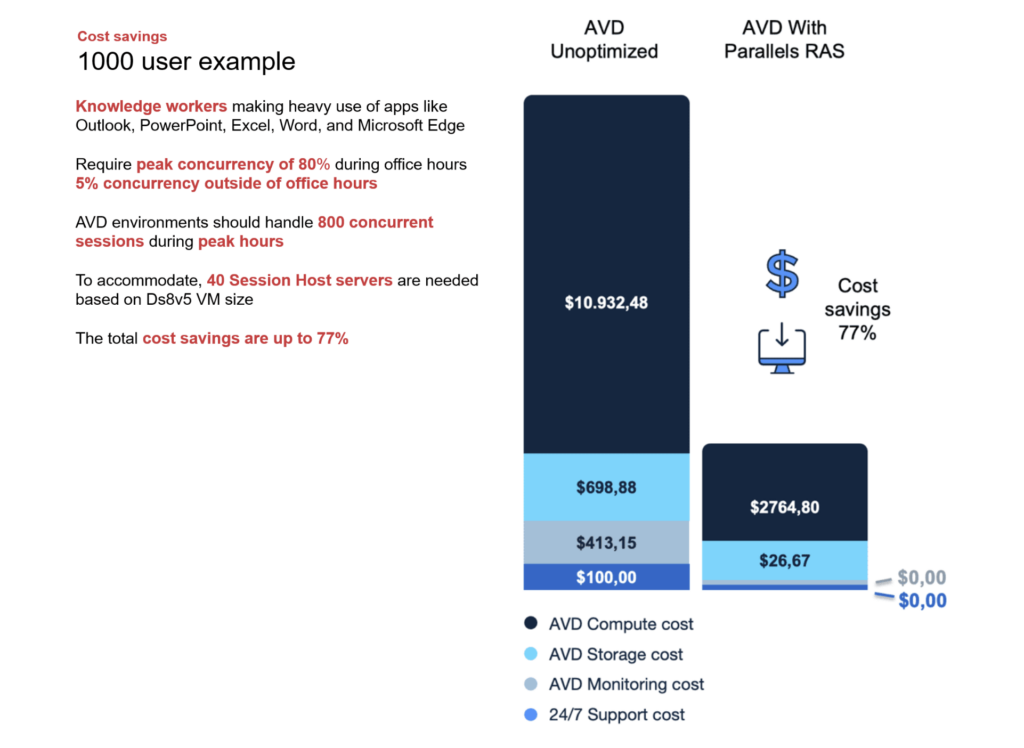The tech industry will continue to undergo major transformations next year, driven by the evolving needs of the digital landscape. Let’s explore the top predictions for our 2024 tech forecast:
1. Embracing the new normal in IT: Remote work & security
First off, the remote work trend isn’t just a phase – it’s here to stay, and it’s reshaping the responsibilities of IT administrators. In 2024, expect to see IT admins focusing even more on keeping things secure and compliant, especially with the rise of BYOD (Bring Your Own Device) and contractor access. We’re moving past the era of traditional VPNs and web gateways; it’s all about innovative solutions for our diverse, remote, and hybrid work environments. And guess what? The Digital Employee Experience (DEX) is now more crucial than ever.
2. Cloud meets AI: A match made in tech heaven
In 2024, the combination of cloud computing and AI will revolutionize how quickly we can develop and launch SaaS (Software as a Service) applications. Productivity gains for developers are through the roof with some seeing more than 50% gains. It means more innovative, efficient software solutions on the horizon. Plus, for those already in the cloud, adopting and using GenAI models will equate to faster time to value.
3. Budgets in IT: A balancing act
IT budgets are constantly evolving. While total spending might not see a huge shift, where the money goes is changing. Think more focus on security, managing endpoints, and securing applications. It’s all about smart spending in 2024 with FinOps being a crucial tool for the IT.
4. The rise of hybrid cloud
The hybrid cloud isn’t just for the big players or regulated industries anymore. In 2024, it’s going mainstream, with more organizations blending on-premises investments with cloud services. This flexible approach is gaining traction. According to the recent 2023 Hybrid Cloud Survey, two-thirds of respondents, 64%, have already implemented a hybrid approach, and 38% of all respondents intend to enhance their adoption of the hybrid cloud within the upcoming year. GenAI is only going to accelerate cloud adoption, and legacy workloads will need the ability to work with these new workloads in the cloud.
5. When vendors change, cloud adoption grows
Vendor decisions have a strong influence on IT strategies. For example, as vendors like Citrix and VMware evolve through mergers and acquisitions or leave a customer segment, many businesses lean toward a cloud-first strategy. This shift is becoming a significant driver for cloud adoption. This also becomes a time to consolidate vendors.
6. Legacy apps: The ongoing challenge
Despite rapid cloud adoption, many companies are sticking with on-premises infrastructure due to compatibility issues with legacy apps. According to a recent survey by Parallels, 49% of IT professionals affirmed the ongoing need to support legacy Windows and Linux applications beyond five years. Expect legacy app challenges to be a hot topic well beyond 2024.
7. Safeguarding against browser-borne threats with zero-trust alternatives
With more apps moving to a SaaS model delivered from the cloud, protecting against cyberattacks like malware and phishing originating from browsers will be a priority for IT organizations. Remote Browser Isolation (RBI) is becoming a go-to solution to help neutralize online threats and stave off exposure to malware and other cyberthreats in a zero-trust stack. RBI works by containerizing and isolating individual applications and cloud-hosted environments, to ultimately prevent data leaks from the organization.
8. Generative AI: Shaping our digital world
Generative AI is making waves, from content creation to design and beyond. With cheaper and more accessible APIs, we can expect a lower barrier to the adoption of Large Language Models (LLMs) for a variety of use cases from marketing, sales, data analytics, software development, customer support, and cybersecurity.
9.Bottom-up tech spending: A new trend
Even with tight top-down budgets, employees and teams are investing in tech tools they find valuable. This bottom-up spending trend signifies a shift in technology adoption within organizations, despite the economic conditions.
10. Looking forward to predictable growth in 2024
Finally, 2024 is shaping up to be a year of predictability in tech. We’re expecting growth in end-user computing device shipments, with a spotlight on Macs in the enterprise world. It’s a welcome change from the uncertainties of recent years.
In conclusion, our 2024 tech forecast predicts that remote work, AI evolution, and cloud strategies will be key drivers to IT success. It’s all about being adaptable and seizing new opportunities in this ever-changing tech landscape. Stay tuned, stay adaptable, and let’s make the most of these exciting times!
